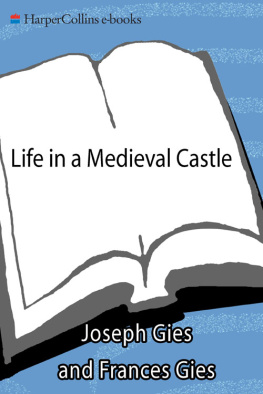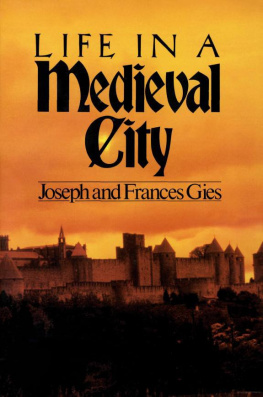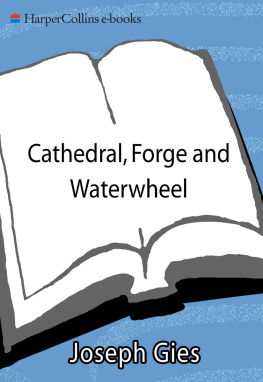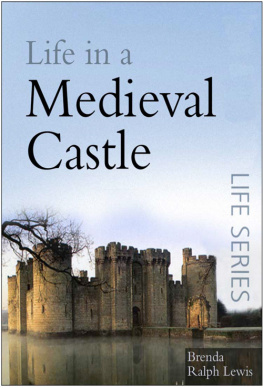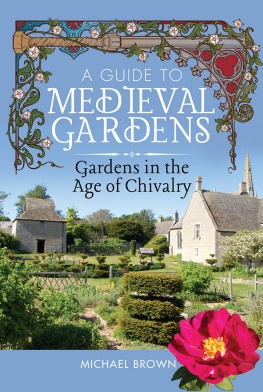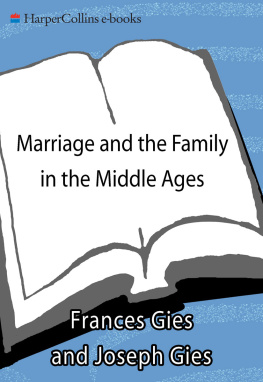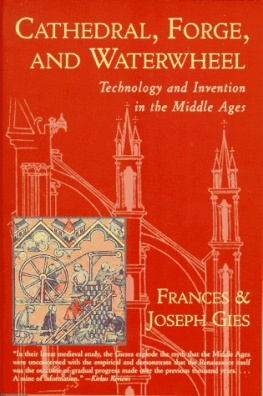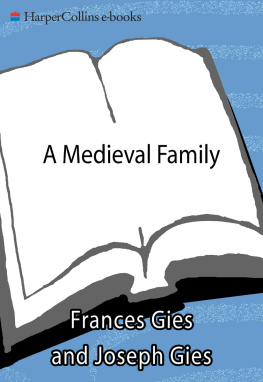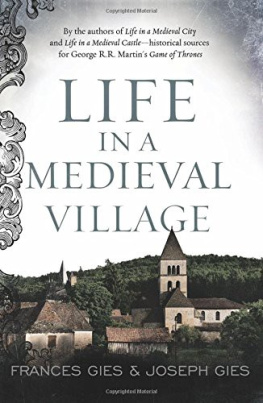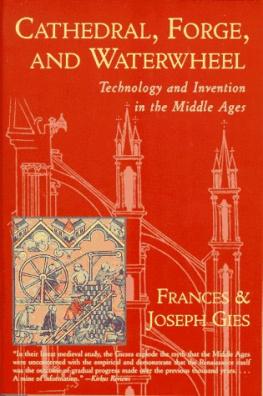Joseph Gies - Life in a Medieval Castle
Here you can read online Joseph Gies - Life in a Medieval Castle full text of the book (entire story) in english for free. Download pdf and epub, get meaning, cover and reviews about this ebook. year: 1979, publisher: Harper Perennial, genre: History. Description of the work, (preface) as well as reviews are available. Best literature library LitArk.com created for fans of good reading and offers a wide selection of genres:
Romance novel
Science fiction
Adventure
Detective
Science
History
Home and family
Prose
Art
Politics
Computer
Non-fiction
Religion
Business
Children
Humor
Choose a favorite category and find really read worthwhile books. Enjoy immersion in the world of imagination, feel the emotions of the characters or learn something new for yourself, make an fascinating discovery.
- Book:Life in a Medieval Castle
- Author:
- Publisher:Harper Perennial
- Genre:
- Year:1979
- Rating:4 / 5
- Favourites:Add to favourites
- Your mark:
- 80
- 1
- 2
- 3
- 4
- 5
Life in a Medieval Castle: summary, description and annotation
We offer to read an annotation, description, summary or preface (depends on what the author of the book "Life in a Medieval Castle" wrote himself). If you haven't found the necessary information about the book — write in the comments, we will try to find it.
Life in a Medieval Castle — read online for free the complete book (whole text) full work
Below is the text of the book, divided by pages. System saving the place of the last page read, allows you to conveniently read the book "Life in a Medieval Castle" online for free, without having to search again every time where you left off. Put a bookmark, and you can go to the page where you finished reading at any time.
Font size:
Interval:
Bookmark:
To Lynn, who builds castles

Chepstow Castle, with the River Wye in the right background: At the eastern end of the castle (to the right), Martens Tower and the great gatehouse, leading to the lower bailey or courtyard, flanked on the side toward the river by the thirteenth-century living quarters. Beyond, a gate guarded by a round tower leads to the middle bailey. At the narrowest point of the ridge rises the Great Tower, built about 1070. Beyond it, the upper bailey leads to the barbican (advance fortification) and western gatehouse. (Department of the Environment, U.K.)
NORTH OF THE NEW SEVERN SUSPENSION BRIDGE, on the Welsh border in Monmouthshire, Chepstow Castle rises from a narrow ridge commanding the River Wye, a broad, shallow stream that fluxes daily with the tidal Severn from a navigable river to a nearly dry mud flat.
From the opposite bank of the Wye, the castle presents the image of a rugged and almost intact stone fortress, of immense length (nearly seven hundred feet), oriented east-west, its battlemented walls buttressed by several powerful towers, both square and cylindrical. The stone, varying from gray limestone to yellow and dark red sandstone, reinforces the towers suggestion of more than one period of construction.
Entry to the castle is through the Great Gatehouse at the eastern end, leading to a large grassy courtyard some two hundred feet square. South from the gatehouse extends a forty-foot-high wall that ends at the castles southeast corner in an enormous tower, flat on the inner side, semicircular on the outer, known as Martens Tower, a designation it acquired late in its history when Henry Marten, a seventeenth-century political prisoner, was confined in it for the last twenty years of his life. On the north side, facing Martens Tower, an array of thirteenth-century buildings known as the domestic range hugs the wall overlooking the river. Examined more closely, the domestic range resolves into two large stone halls, with chambers, cellars, storerooms, andpositioned directly over the riverlatrines.
This easternmost court is known as the Lower Bailey. Beyond it to the west, with access through a tower-guarded inner gate, lies the Middle Bailey, another walled enclosure. At its farther end, oriented like the entire castle east and west and almost completely occupying the narrowest part of the ridge, rises the Great Tower. Now a floorless, roofless shell with half its upper story destroyed, the Great Tower is the oldest part of Chepstow, originally built in the eleventh century, and until the construction of the domestic range the center of the castles life. Twice remodeled, with a third story added to its initial two, Chepstow Castle in its earliest form can here be identified by masonry and architectural detail: huge yellow stone blocks in the base supporting walls of smaller, rougher yellow stone, pierced by small round-headed (Romanesque) windows and doorways with similar arches, or with square lintels. The first remodeling, in the second quarter of the thirteenth century, marked by rough limestone masonry, added a third story to the western third of the tower and enlarged the openings of the second story, converting them into pointed-arch (Gothic) windows and doors, with elaborate carved decoration. The final addition late in the thirteenth century of the eastern two-thirds of the upper story is indicated by the use of roughly-squared rubble and red sandstone.
On the northern side of the Great Tower runs a

Chepstow Castle: The great (eastern) gatehouse and Martens Tower. (Department of the Environment)
passageway known as the Gallery, once timber-covered, squeezed between the Great Tower and the wall fronting the river. Another fortified gate (now gone) once guarded the entrance from the Gallery into the third and westernmost courtyard, the Upper Bailey, at the end of which stands a rectangular tower built to command the western gateway of the castle. This entry was further strengthened by the addition of an outer walled enclosure, or barbican, with its own gatehouse, marking the western extremity of the castle.
Despite the disappearance of timber roofs, floors, and outbuildings and the dilapidation of the upper part of some walls and towers, Chepstow Castle is exceptionally well



Chepstow Castle: The western gatehouse and barbican. On the right, the eleventh-century Great Tower. (Department of the Environment)
preserved. In size, strength, and setting, it is one of the most imposing of the great medieval castles of Europe, the more impressive for the fact that it is unmarred by modern restoration. Its assemblage represents three centuries of castle-building; its lords were four powerful Anglo-Norman families. The weathered stones speak in unmistakable accents of an age of hardihood, few comforts, and much danger, an age dominated by Chepstow and all the other castles from Scandinavia to Italy. Everywhere in Europe in the High Middle Ages the castle played a crucial role: military, political, social, economic, cultural. In England an extraordinary historical context made its career especially dramatic, and England today has one of the richest collections of medieval castle ruins of all the lands where castles appearedone authority asserts there are remnants of at least fifteen hundred.
How such castles came to be built, their function in history, and especially the life that filled them during their thirteenth-century day of glory, is the subject of this book. Because Chepstow illustrates many of the features of castle architecture and living arrangements, and because its lords were among the foremost barons of their time, the story will center around Chepstow. Other castles, in England and on the Continent, will also be freely drawn on, since the exploration of one castle, even a Chepstow, does not suffice to illustrate all the many facets of the life within and surrounding the medieval castle.
The Castle Comes to England
ON THE MORNING OF SEPTEMBER 28, 1066, nearly a thousand double-ended, open longboats, each mounting a single square sail, suddenly appeared off the coast of England at Pevensey, about forty miles southwest of Dover. As the boats ran up on the beach, some seven thousand armed men leaped from them and waded ashore. The army of Duke William of Normandy, after waiting weeks for a favorable wind, had crossed seventy miles of water in a single night to enforce their leaders claim to the English throne. Recruited not only from his own vassals in Normandy, but from mercenaries and adventurers throughout northern France and even farther away, it was for the eleventh century not only a very large but an exceptionally well disciplined force, a tribute to the authority as well as the financial resources of Duke William.
England had seen many seaborne invading forces, but probably never one this large. A novel feature of Duke Williams amphibious army was its horses, no fewer than three thousand of which had been successfully ferried across the Channel by means of a techniqueprobably some kind of sling-harnessthat Norman soldiers of fortune apparently learned from the Byzantine Greeks. Carried in the flotilla was a prefabricated fort, the timbers cut, shaped, framed, and pinned together in France, dismantled, packed in great barrels, and loaded on the ships. Disembarking at Pevensey, the Normans had the reassembled fort complete by evening.
Font size:
Interval:
Bookmark:
Similar books «Life in a Medieval Castle»
Look at similar books to Life in a Medieval Castle. We have selected literature similar in name and meaning in the hope of providing readers with more options to find new, interesting, not yet read works.
Discussion, reviews of the book Life in a Medieval Castle and just readers' own opinions. Leave your comments, write what you think about the work, its meaning or the main characters. Specify what exactly you liked and what you didn't like, and why you think so.

